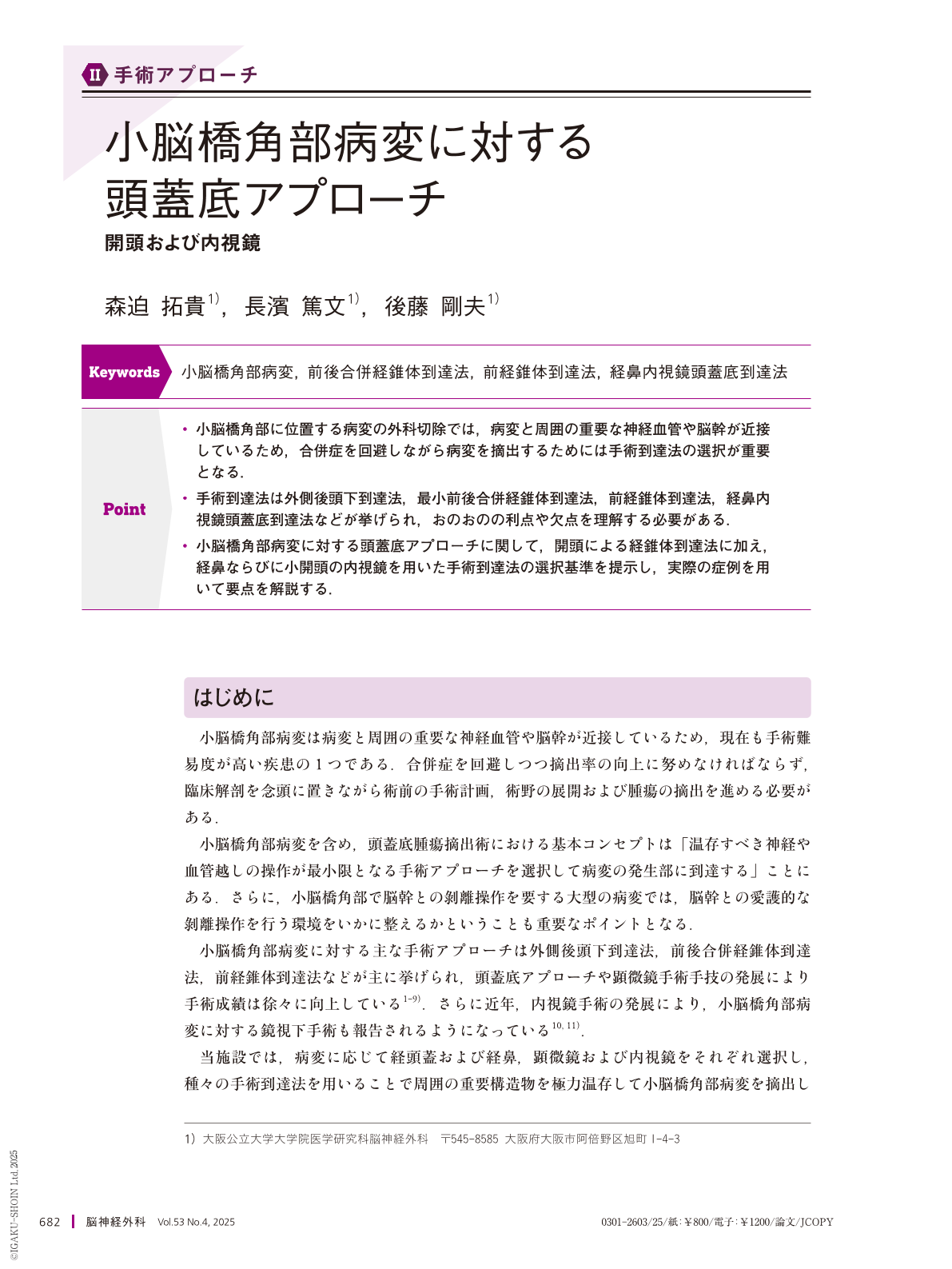Japanese
English
- 有料閲覧
- Abstract 文献概要
- 1ページ目 Look Inside
- 参考文献 Reference
Point
・小脳橋角部に位置する病変の外科切除では,病変と周囲の重要な神経血管や脳幹が近接しているため,合併症を回避しながら病変を摘出するためには手術到達法の選択が重要となる.
・手術到達法は外側後頭下到達法,最小前後合併経錐体到達法,前経錐体到達法,経鼻内視鏡頭蓋底到達法などが挙げられ,おのおのの利点や欠点を理解する必要がある.
・小脳橋角部病変に対する頭蓋底アプローチに関して,開頭による経錐体到達法に加え,経鼻ならびに小開頭の内視鏡を用いた手術到達法の選択基準を提示し,実際の症例を用いて要点を解説する.
*本論文中、[Video]マークのある図につきましては、関連する動画を見ることができます(公開期間:2028年8月まで)。
Cerebellopontine angle lesions should be reduced as much as possible while preserving the cranial nerve and brainstem functions. However, because the lesion is located deep and surrounded by various important structures, surgical procedure is difficult to perform, and a surgical strategy is important to avoid complications.
Surgical outcomes have dramatically improved with the development of skull bases and microsurgical techniques. The main surgical approaches for cerebellopontine angle lesions include the anterior and posterior combined transpetrosal, anterior transpetrosal, lateral suboccipital, and endoscopic endonasal approaches. With the recent developments in endoscopic keyhole surgery, such as the endoscopic keyhole anterior transpetrosal approach, minimally invasive surgery for skull-base lesions has gradually begun.
Here, we describe the preoperative checkpoints, selection of surgical approaches, and surgical techniques for the resection of cerebellopontine angle lesions.

Copyright © 2025, Igaku-Shoin Ltd. All rights reserved.


